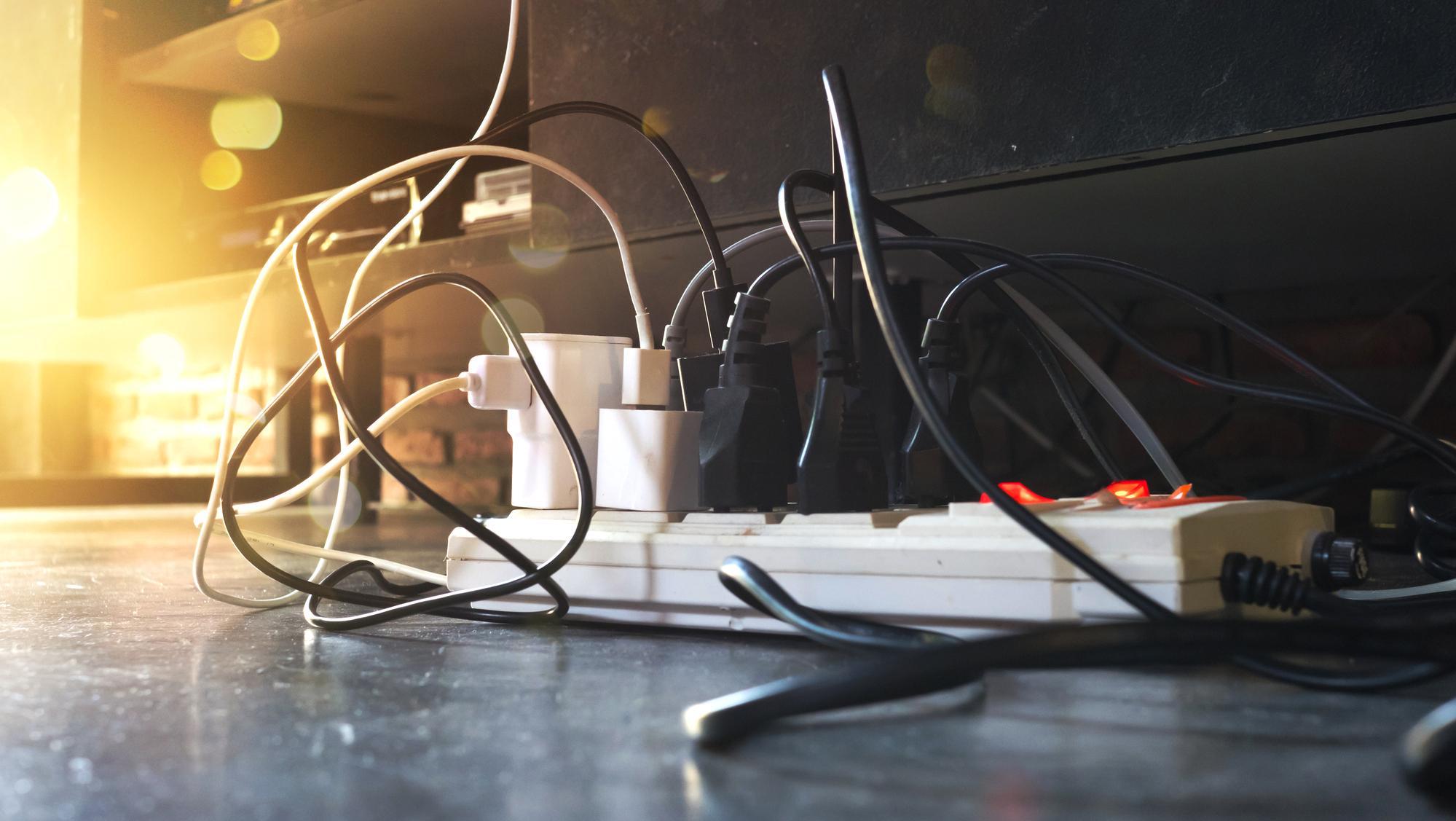How Do You Fix a Power Surge?

The lights got really bright for a split second — or maybe they blinked off for a moment.
Regardless, something fishy is going on with the electricity. Somebody mentions it must have been a power surge, but what does that mean?
What is a power surge, what are the risks, and what can you do to protect your home? Let’s find out!
What Is a Power Surge?
Electricity is supposed to flow freely through the wires. However, sometimes it can be disrupted for a short time. When the flow is restored there is an extra rush of electricity that runs through the system. This is known as a power surge or electrical spike.
The problem is that this power overload can damage the delicate parts inside electrical devices. Large power surges can even start a house fire!
What Are the Causes of Power Surges?
Lightning is perhaps the most impressive cause of a power surge, but it is not the most common by far. Most of the time, power surges are caused by something in the home.
When a high-powered device, such as a refrigerator or air conditioner comes on, the sudden draw on electricity can then cause a power surge. Even small devices like power tools or hair dryers can cause surges. These small power surges aren’t spectacular, but they can reduce the lifespan of your appliances because they happen so frequently.
Other causes of power surges come from outside the home. These include tree limbs touching the power lines, small animals electrocuting themselves in a transformer or other piece of electrical equipment, or when the power is restored after an outage.
What Are the Signs of Power Surges?
Power surges aren’t always overtly obvious when they happen. A power surge caused by a lightning strike can be rather spectacular but one caused by your refrigerator may not even be noticeable.
However, even though a surge lasts for less than a second, it can leave behind its footprint. Common signs of power surges include blinking lights or clocks on devices, tripped circuit breakers, or even broken or failing devices.
How to Protect Against Power Surges
Power surges happen all the time, small surges occur perhaps dozens of times in a day. There isn’t a good way to stop them from happening completely.
However, you can greatly reduce the risk to your home and electrical devices with the following tips:
-
* Unplug appliances and devices when not in use
-
* Use quality safety switches
-
* Add quality surge protectors to expensive appliances
-
* Notify your provider about external risks, (e.g. tree limbs near the power lines)
Fixing Power Surges
Power surges can cause serious damage to your delicate electronics. The best way to “fix” a power surge is to protect against them in the first place. Follow our tips to keep your devices and home safe from the damages caused by electrical spikes.





